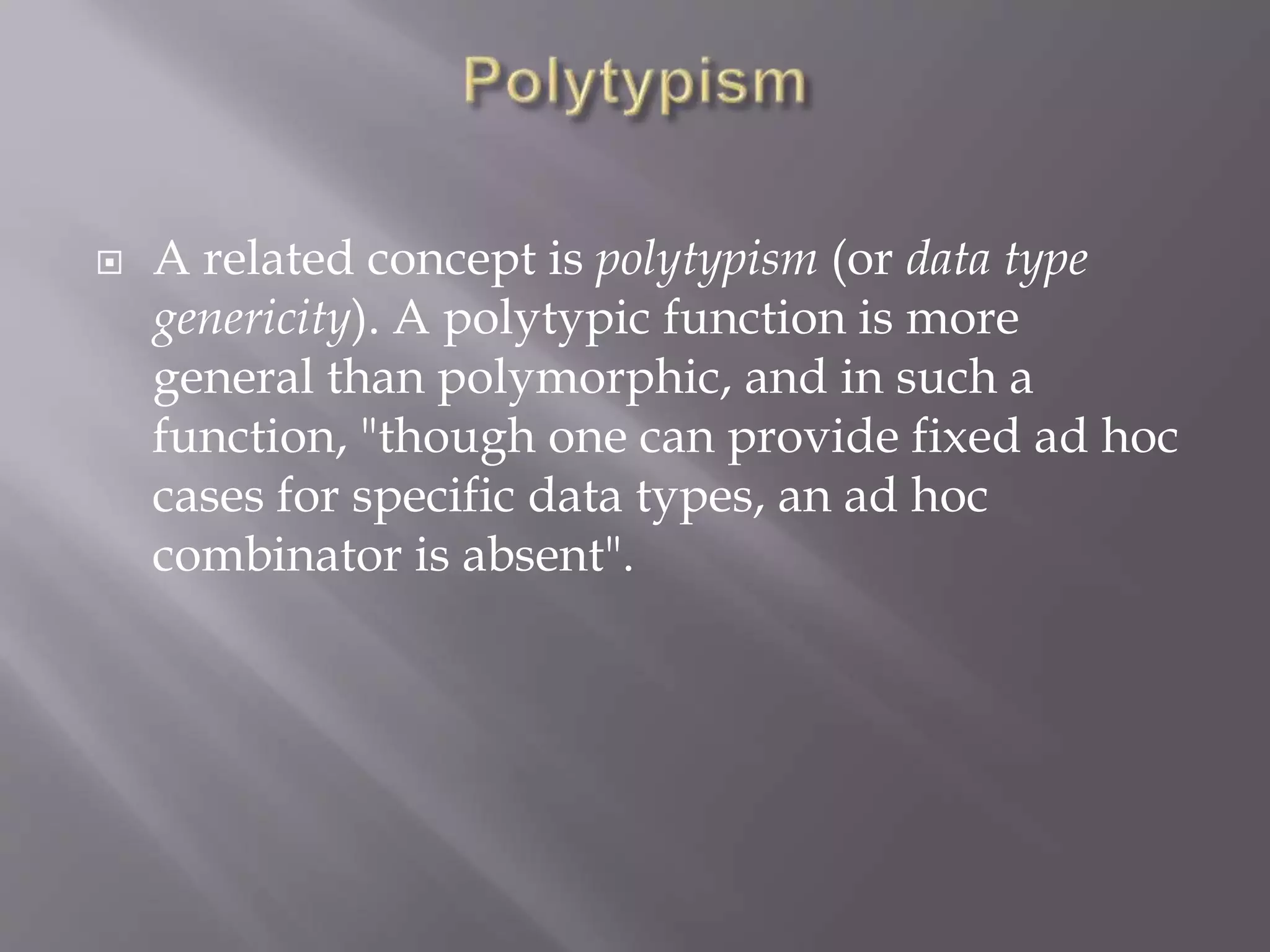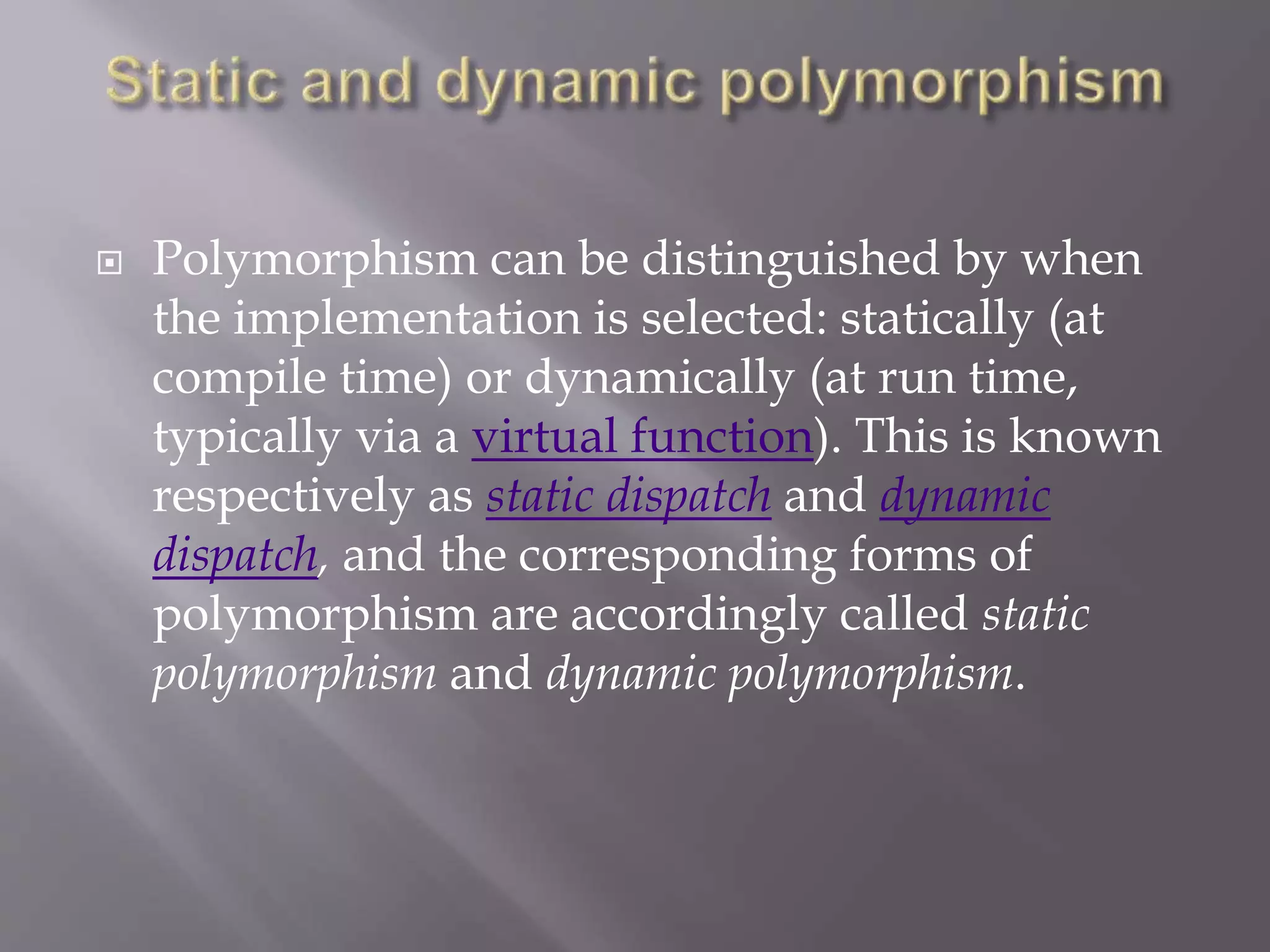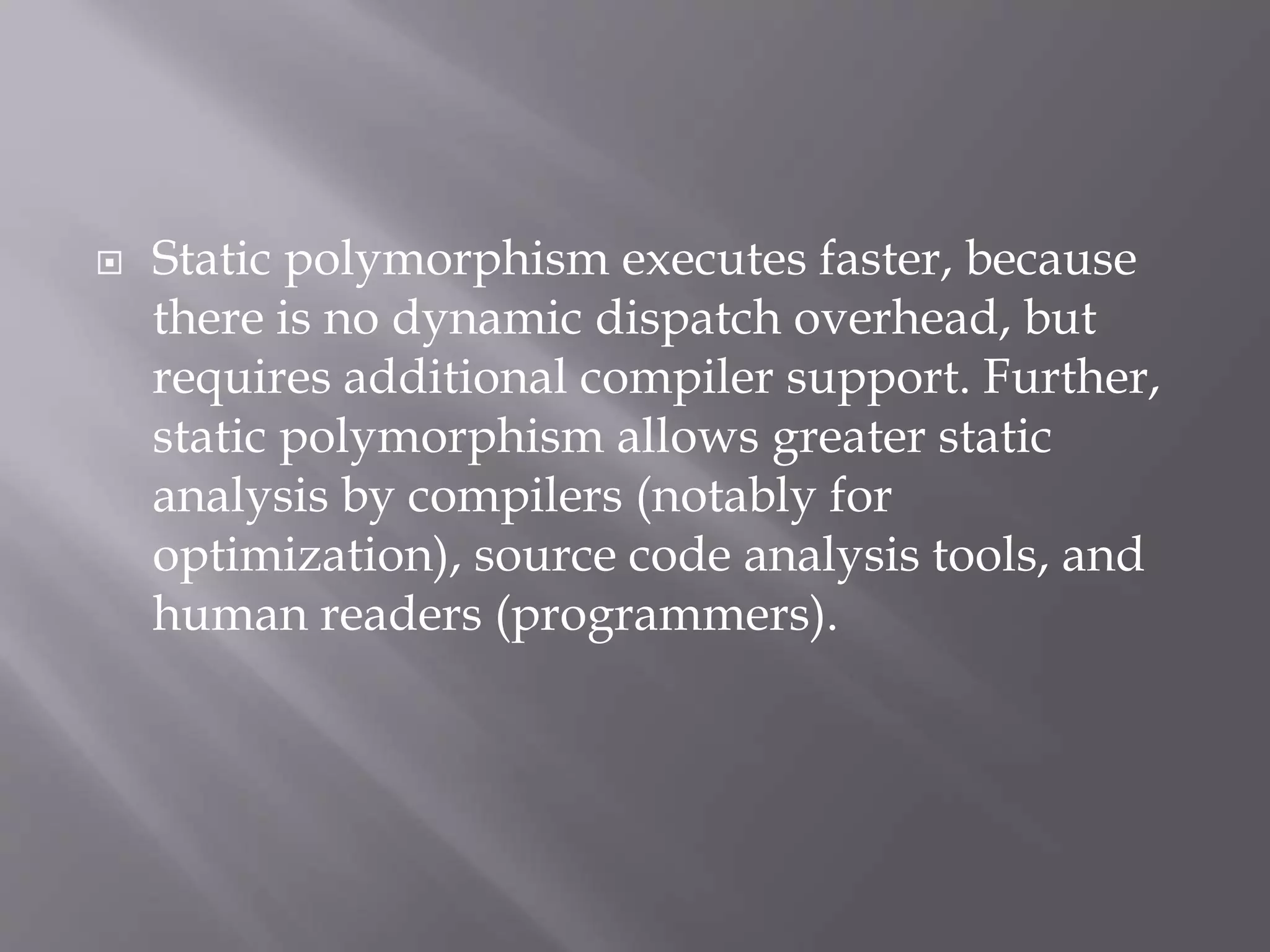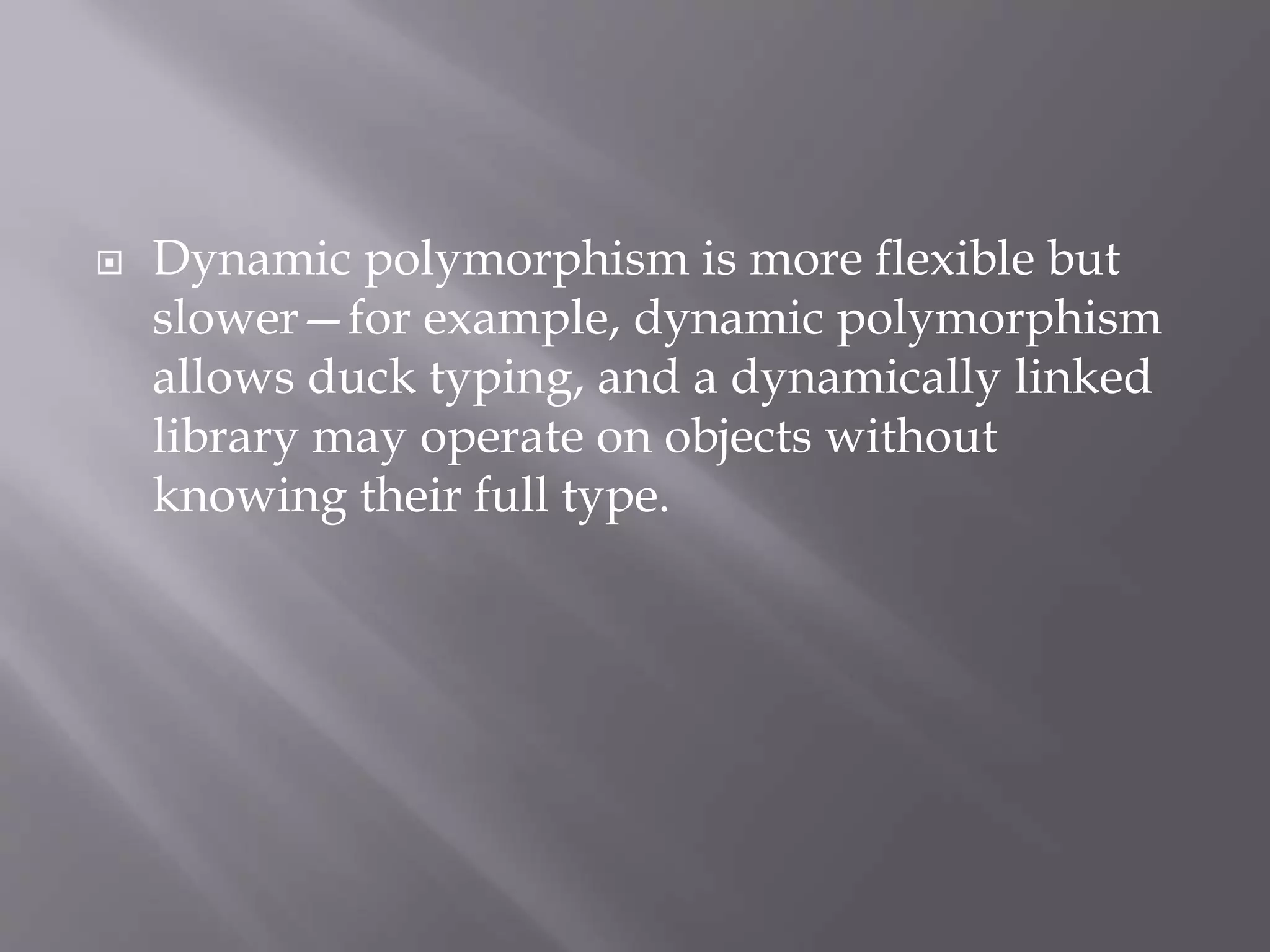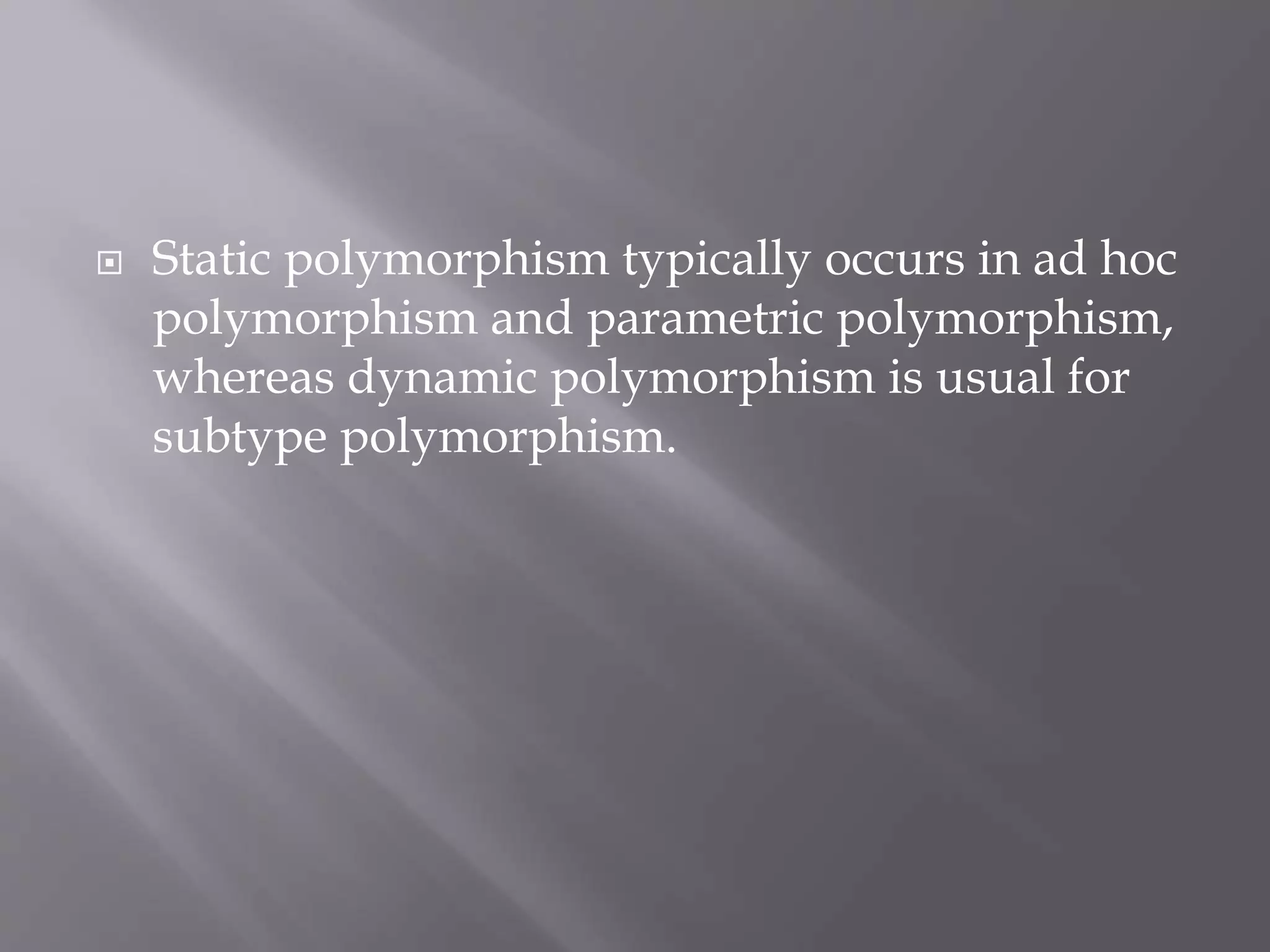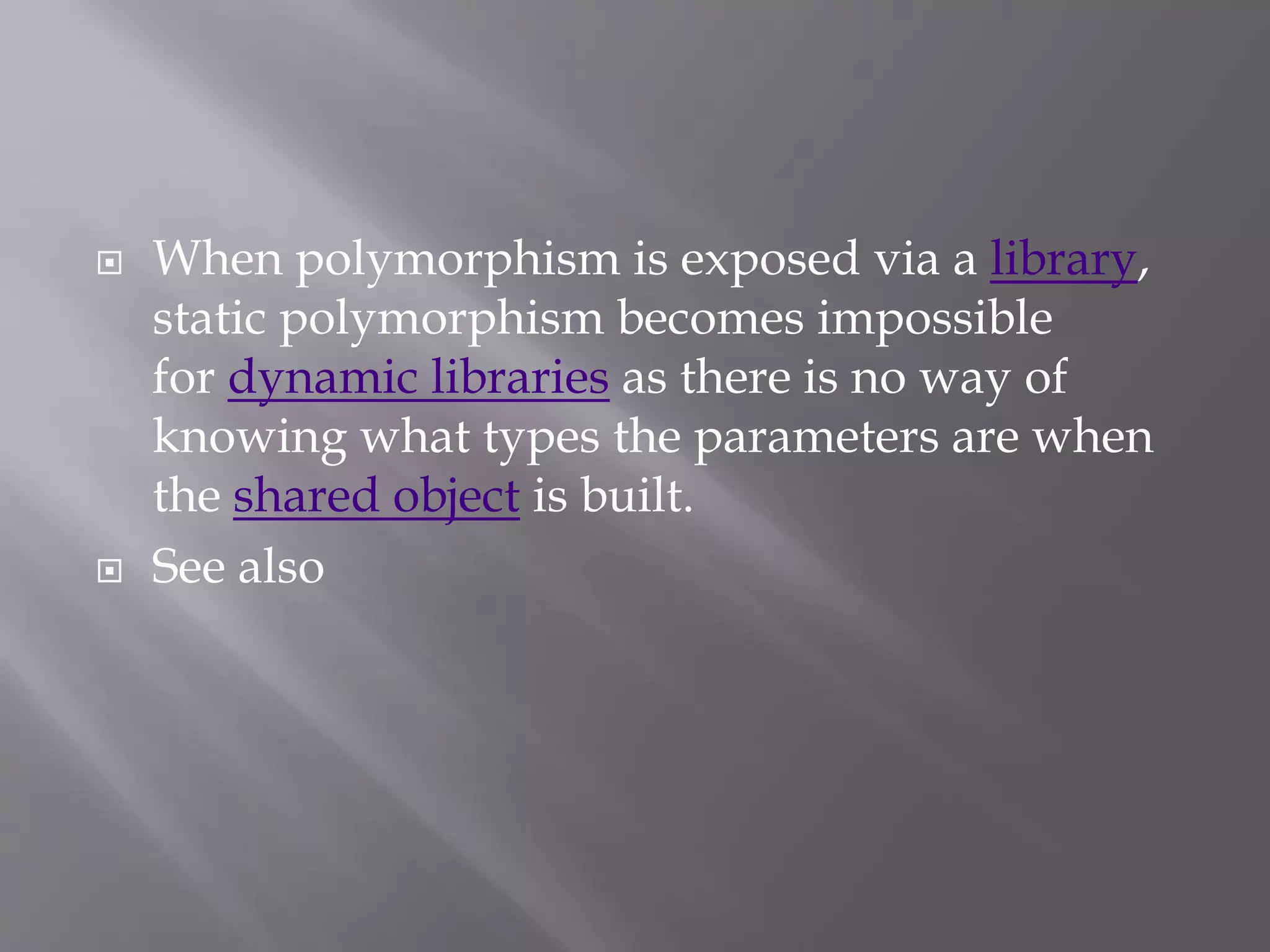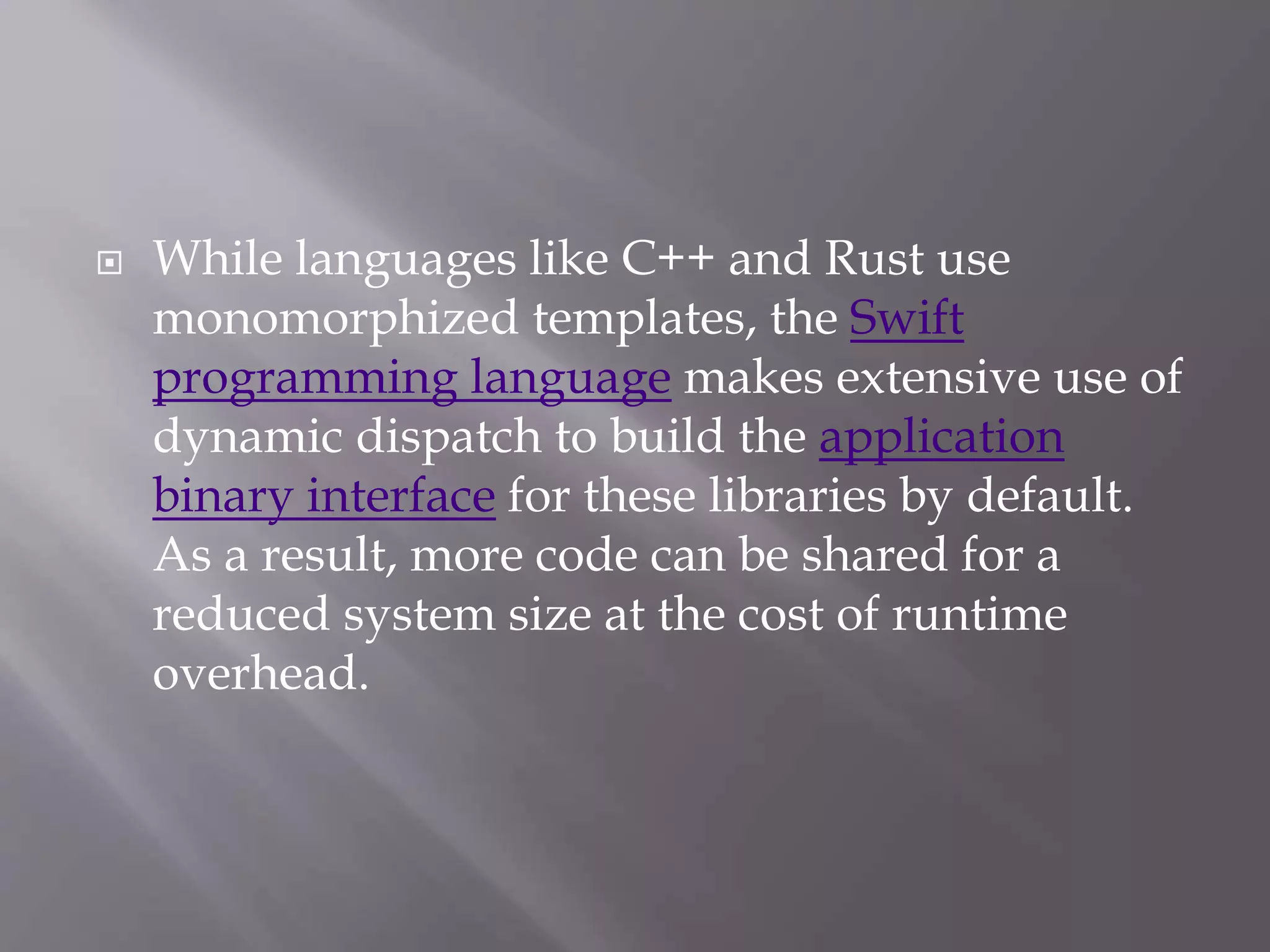The document provides an in-depth overview of polymorphism in programming languages, detailing its main types: ad hoc, parametric, and subtype polymorphism. It emphasizes the distinctions, usages, and implementations of these types, alongside examples from various programming languages. Additionally, it discusses the concepts of static and dynamic dispatch, their implications on performance, and further related ideas like variance and polytypism.
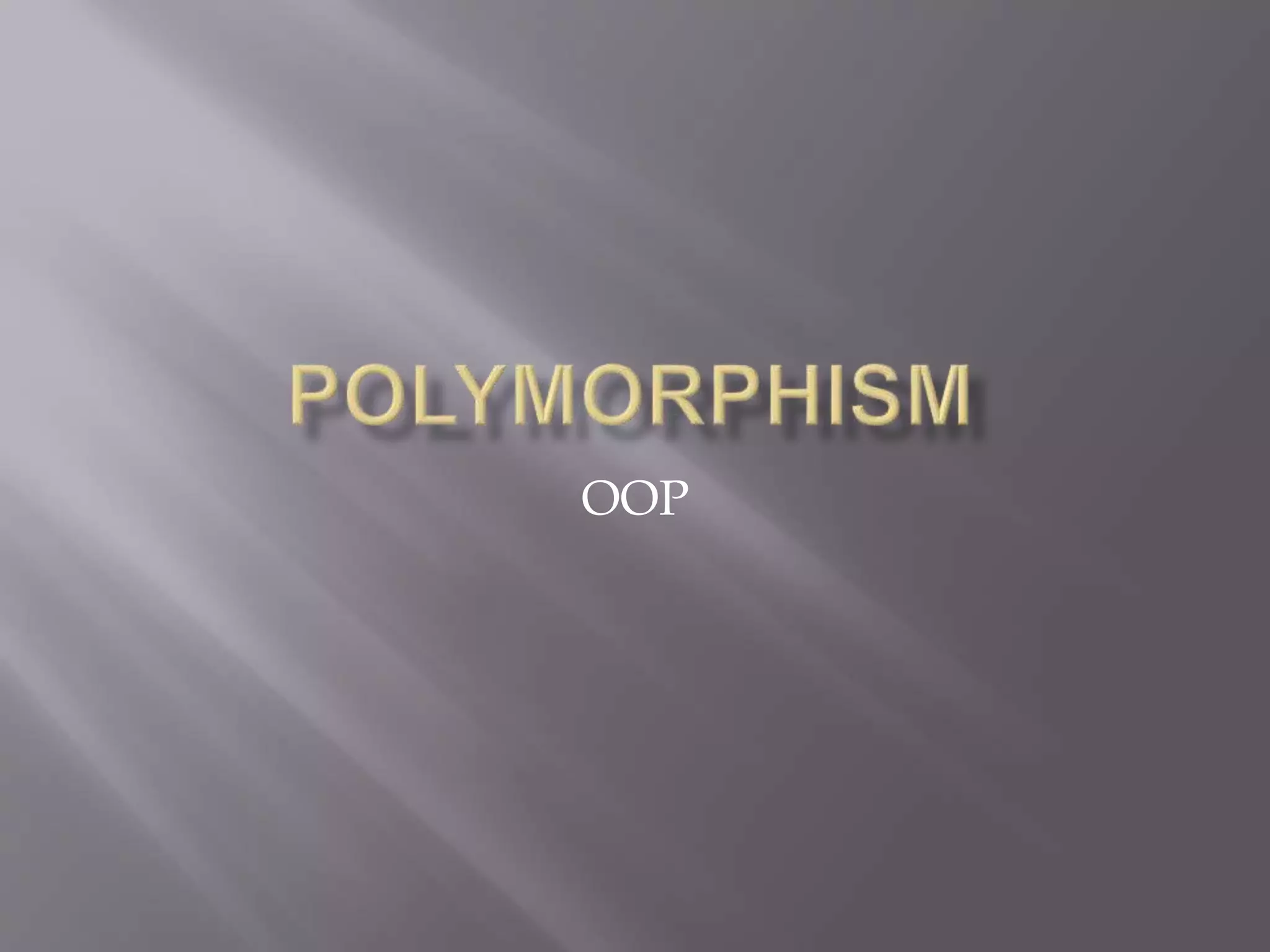
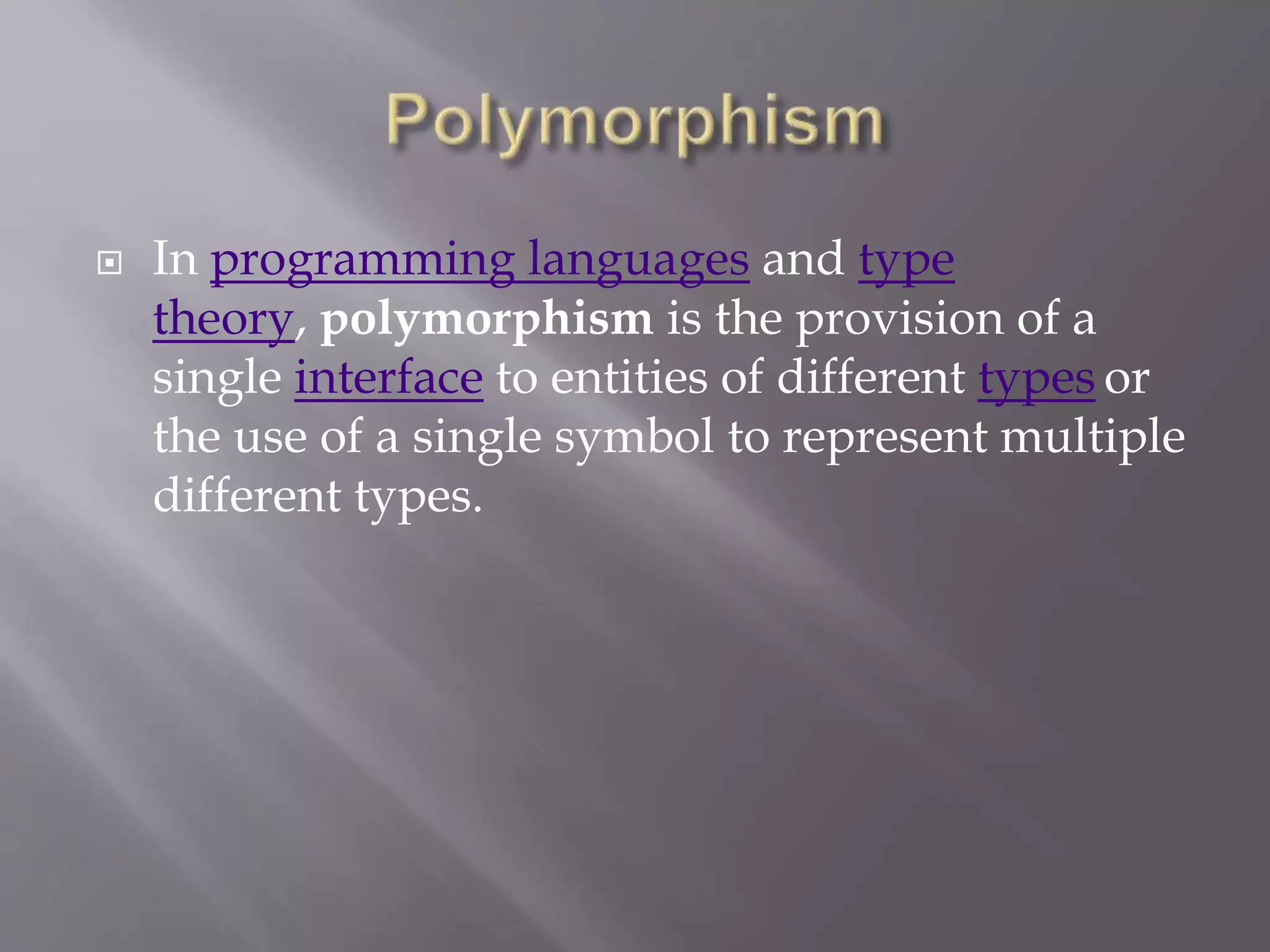
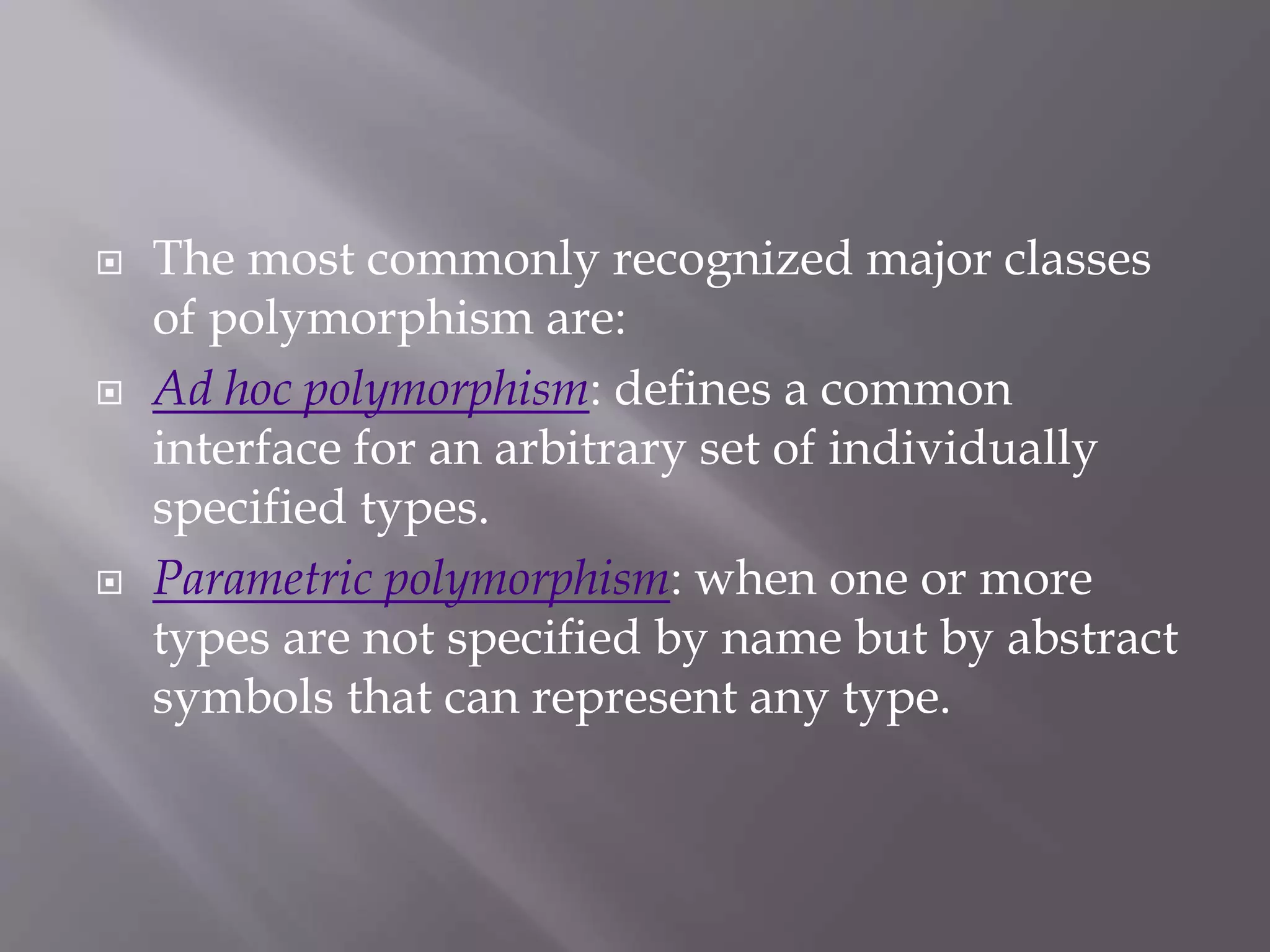

![ Christopher Strachey chose the term ad hoc
polymorphism to refer to polymorphic functions
that can be applied to arguments of different
types, but that behave differently depending
on the type of the argument to which they are
applied (also known as function
overloading or operator overloading).[5]](https://image.slidesharecdn.com/polymorphism-200830090817/75/Polymorphism-5-2048.jpg)

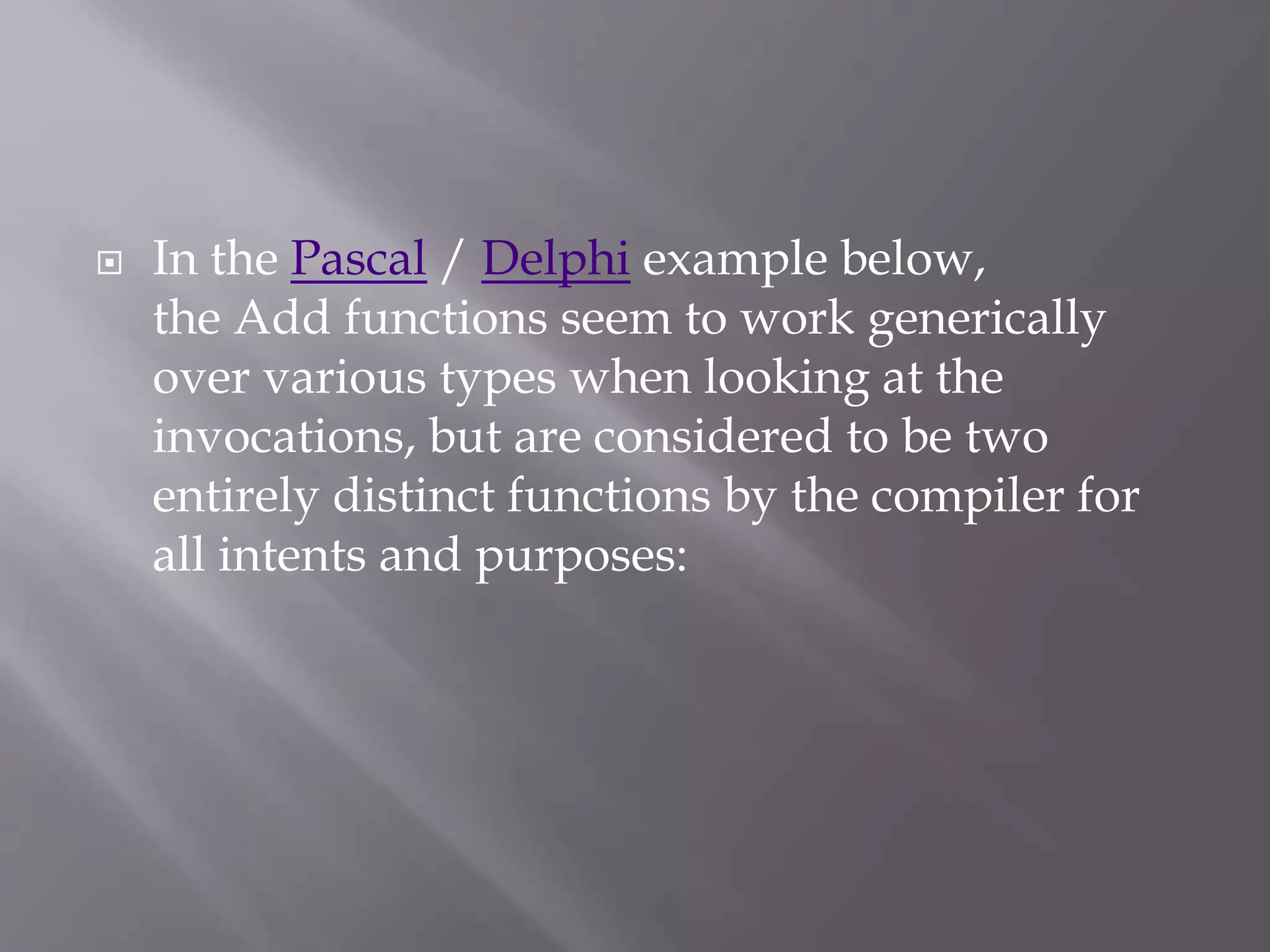
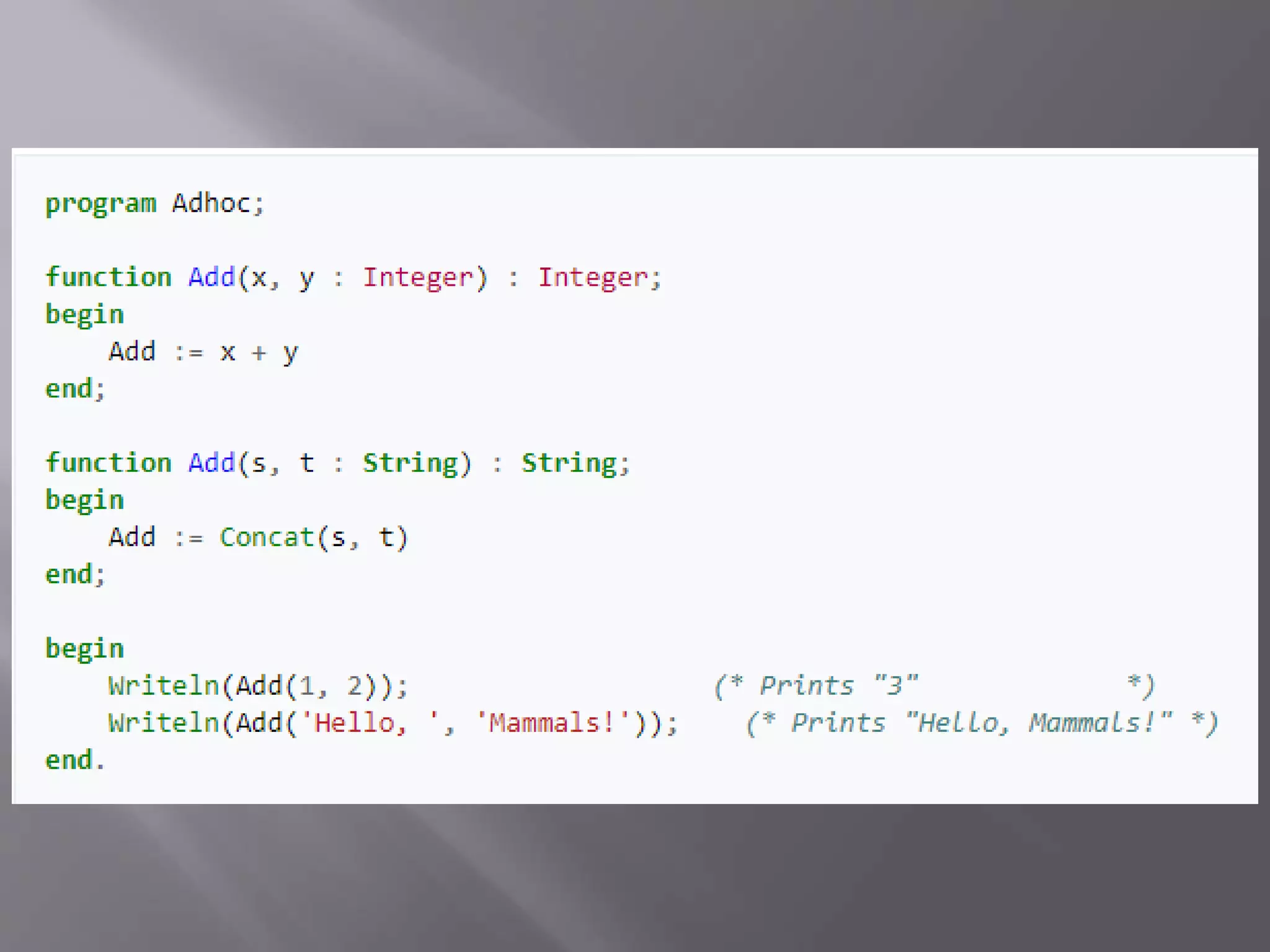
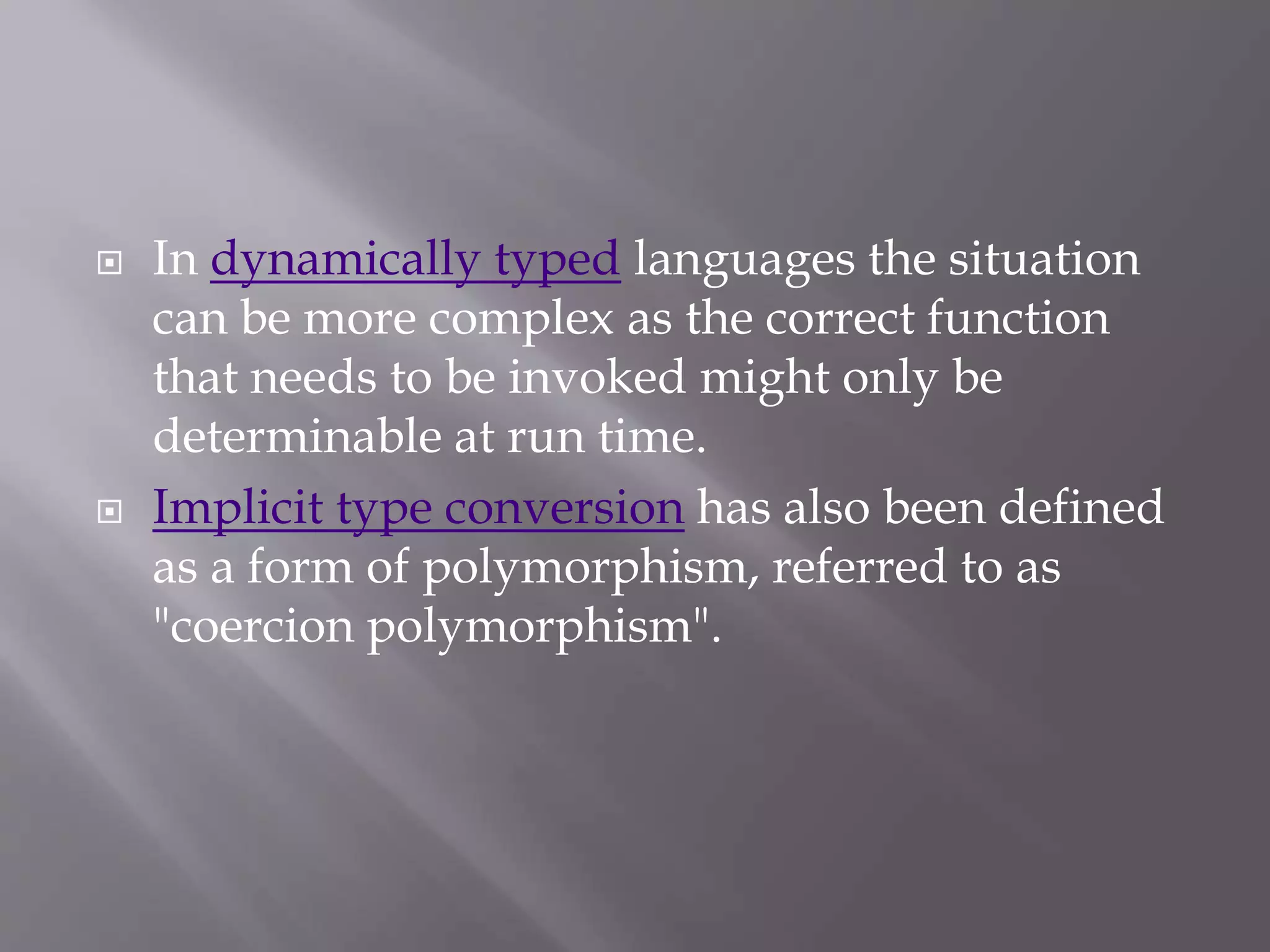
![ Parametric polymorphism allows a function or a
data type to be written generically, so that it
can handle values uniformly without depending
on their type.[7] Parametric polymorphism is a
way to make a language more expressive while
still maintaining full static type-safety.](https://image.slidesharecdn.com/polymorphism-200830090817/75/Polymorphism-10-2048.jpg)

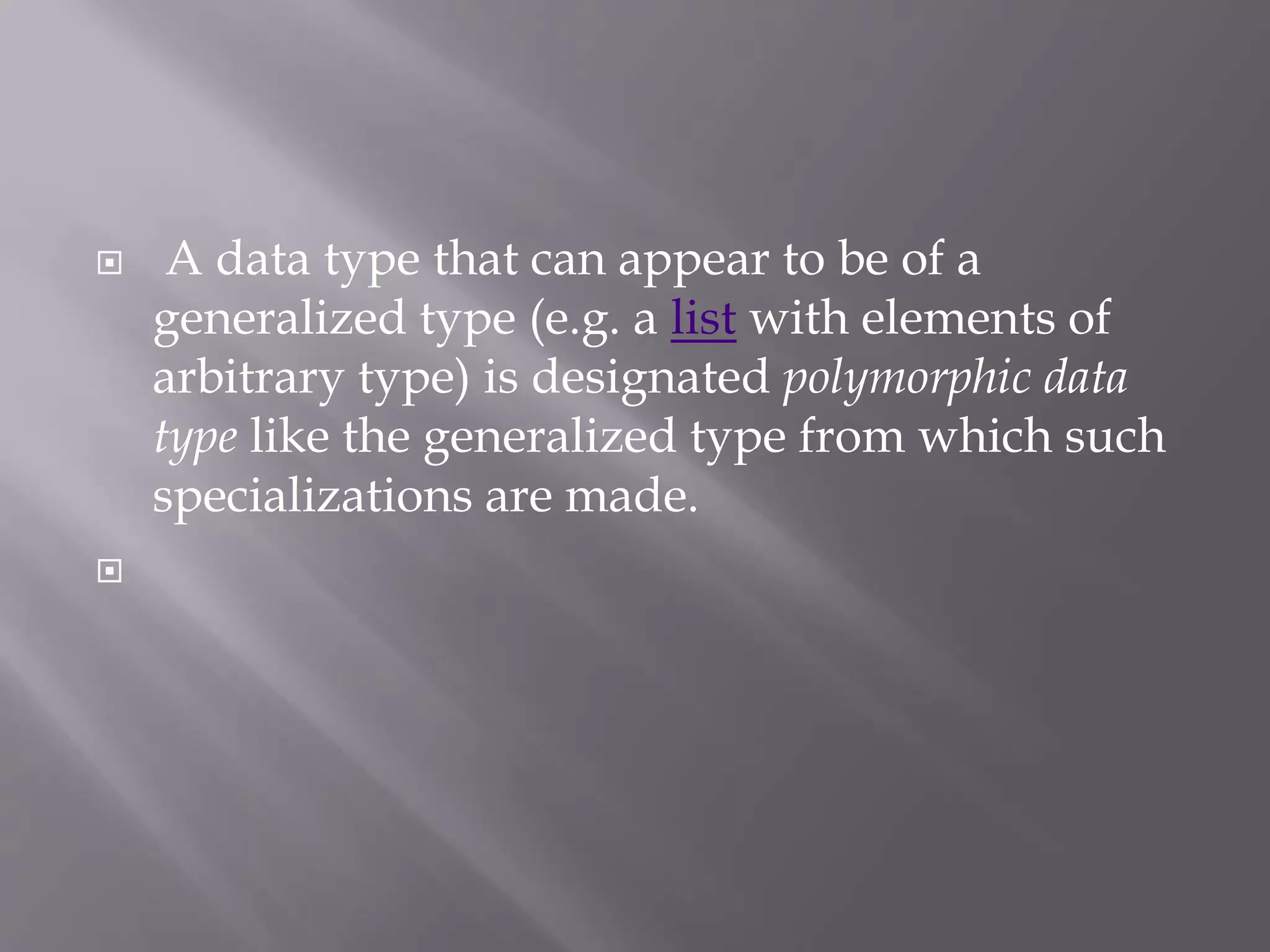
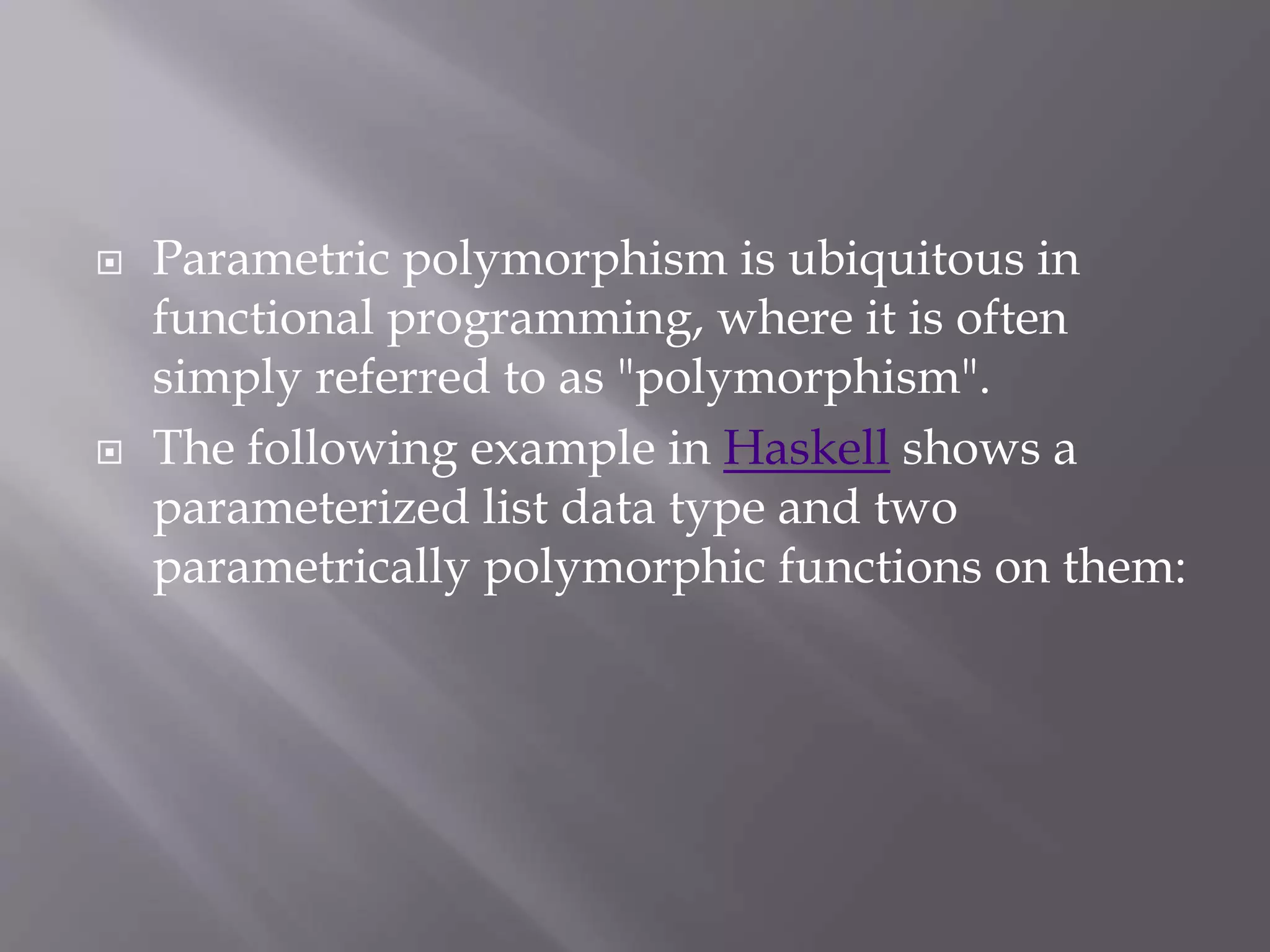
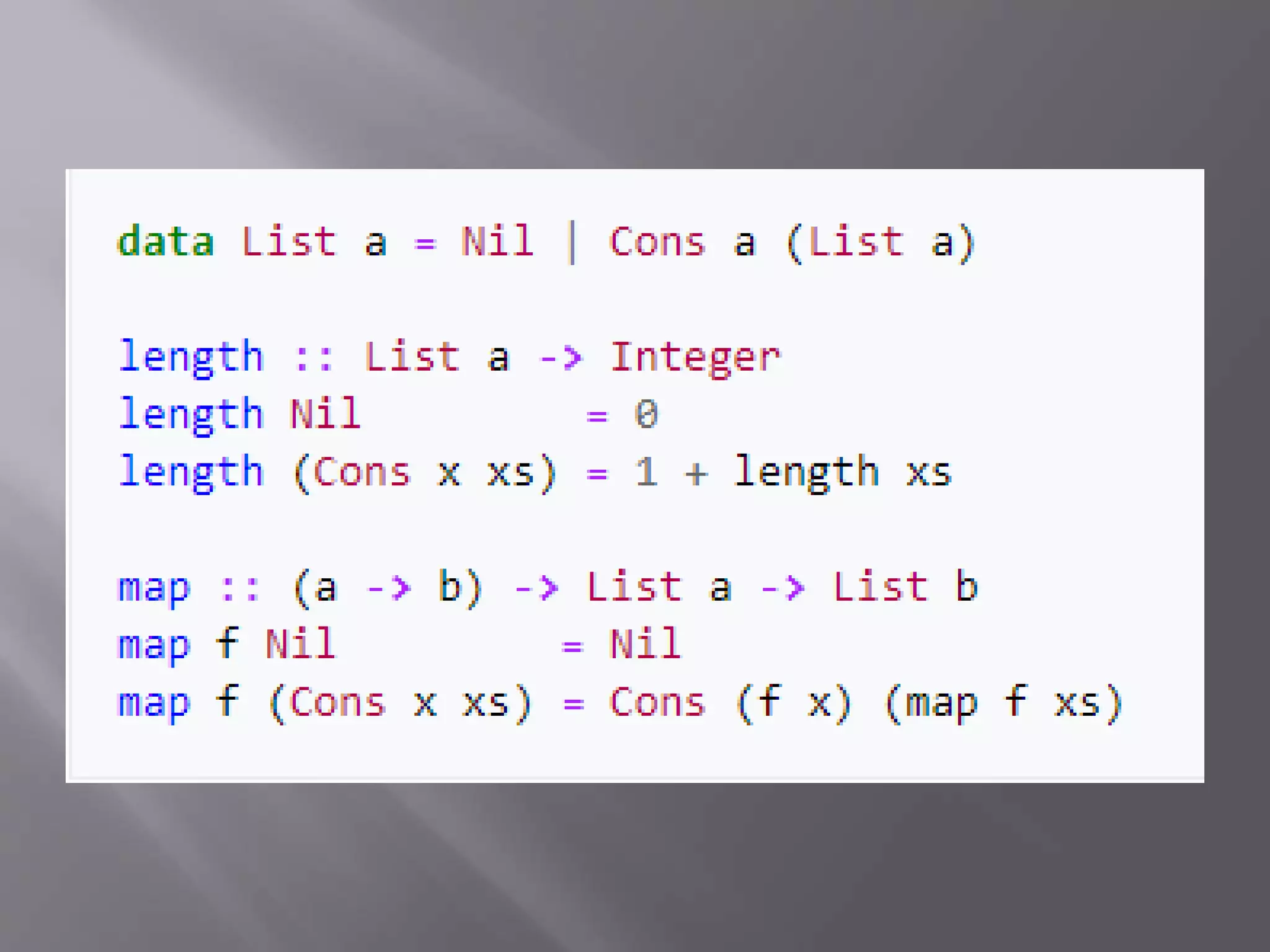

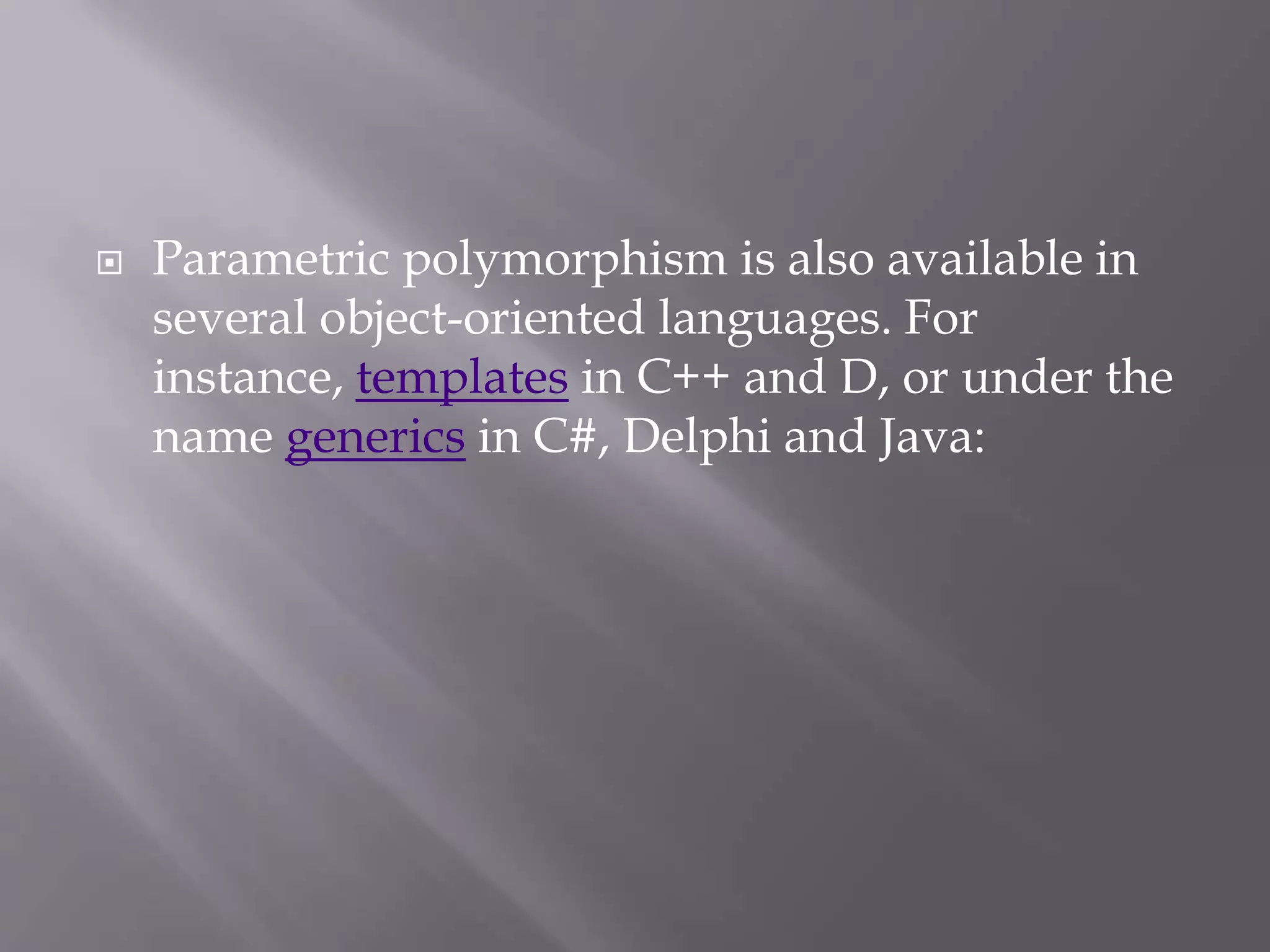
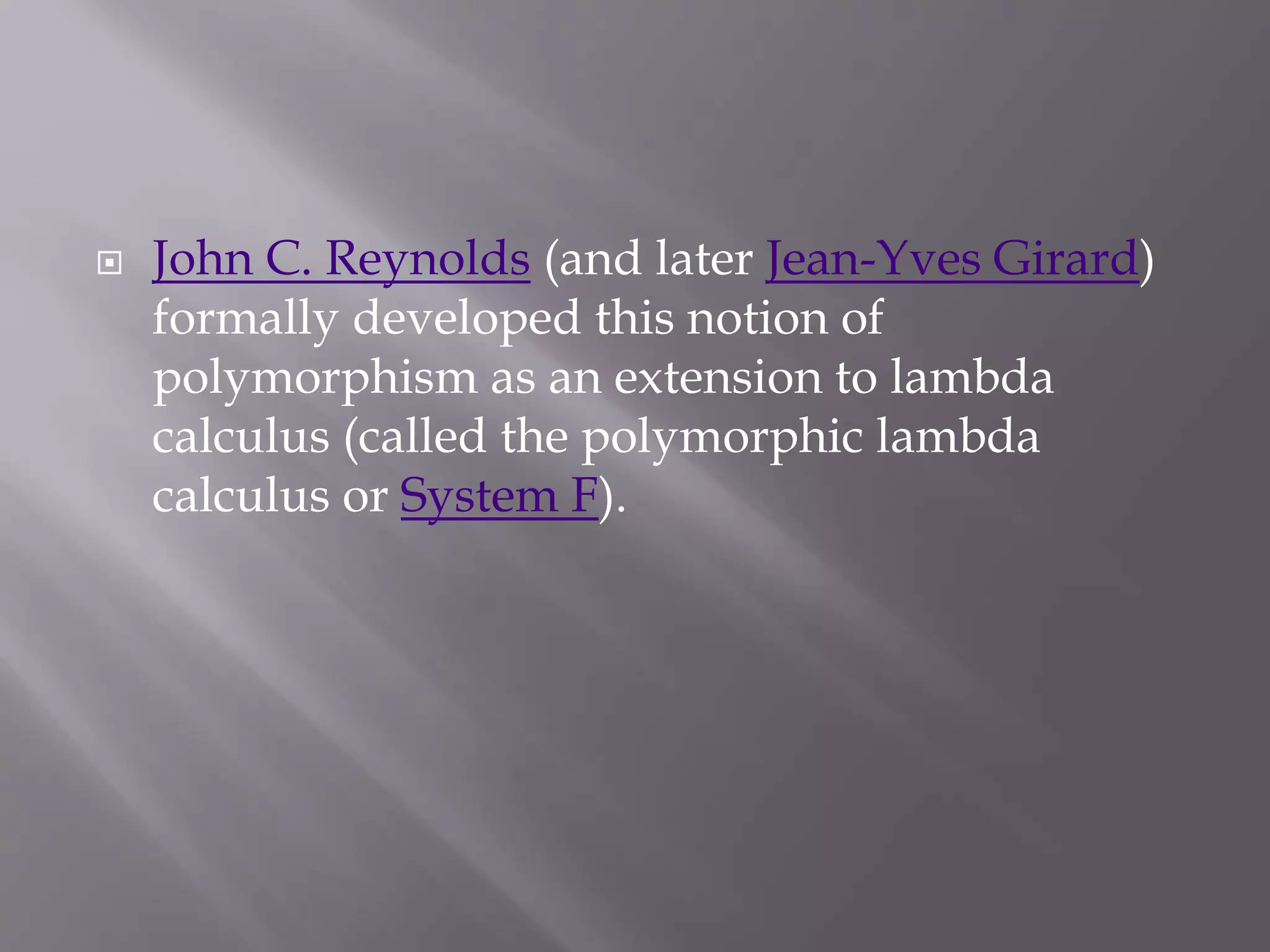
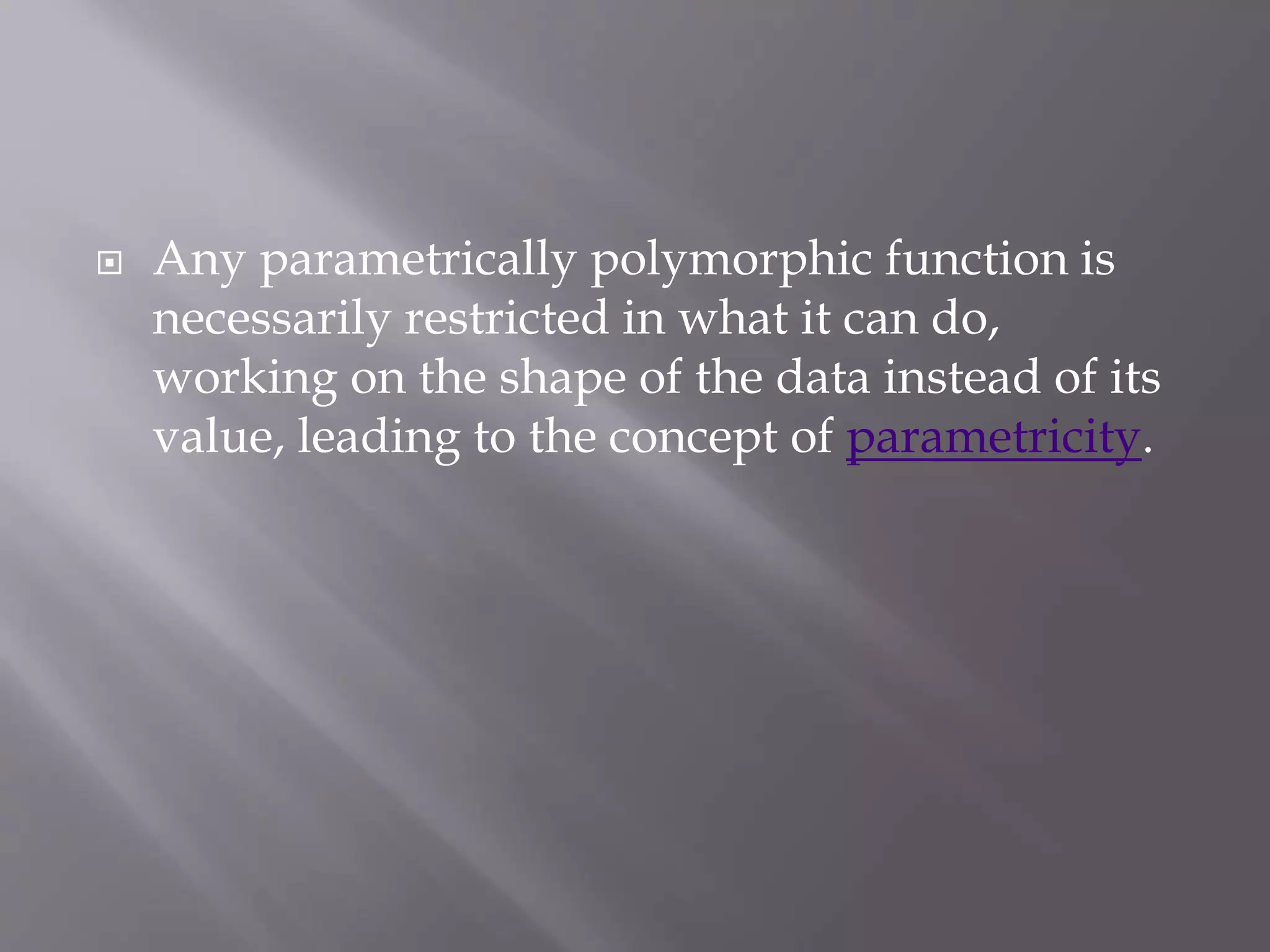
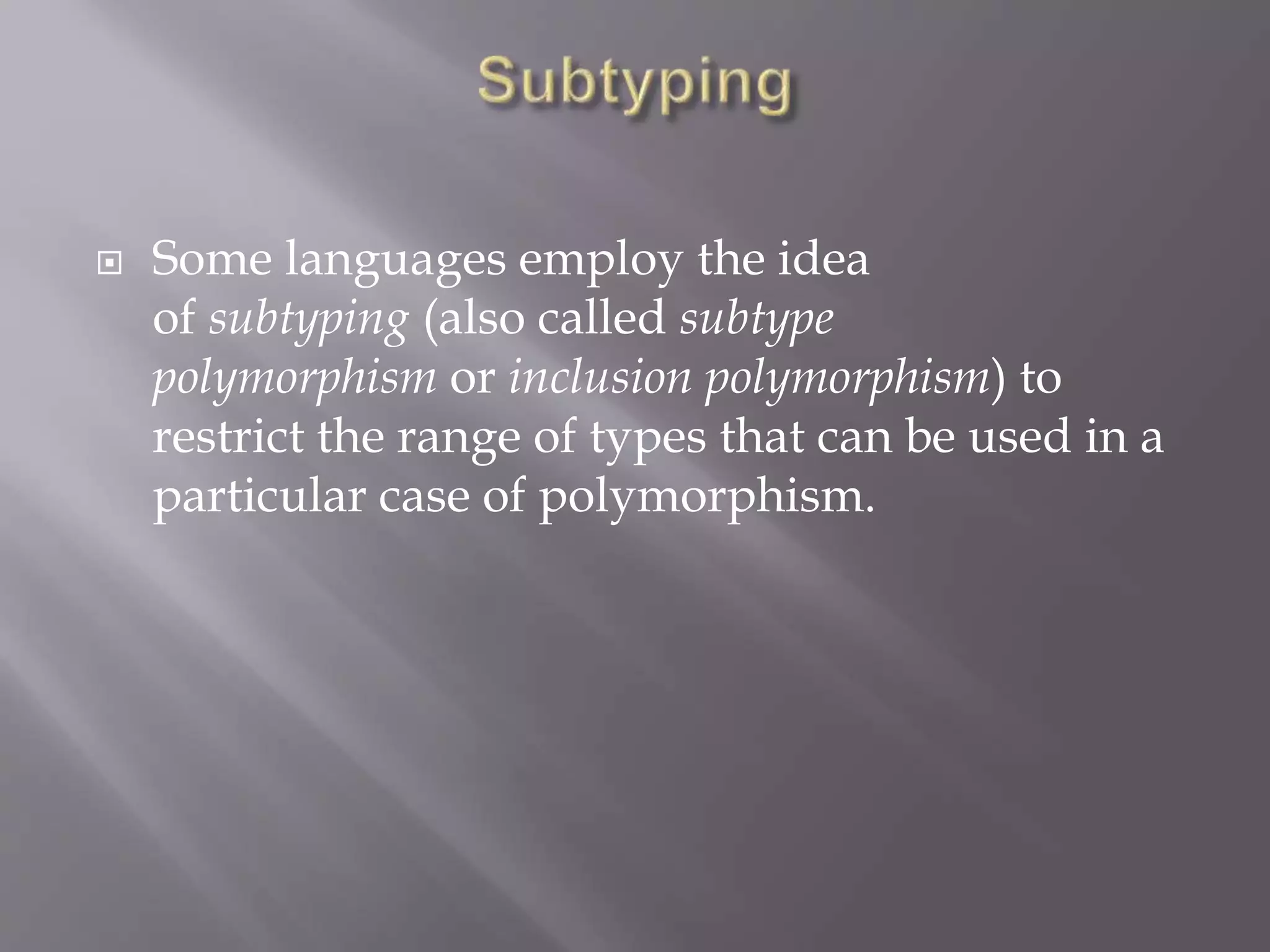
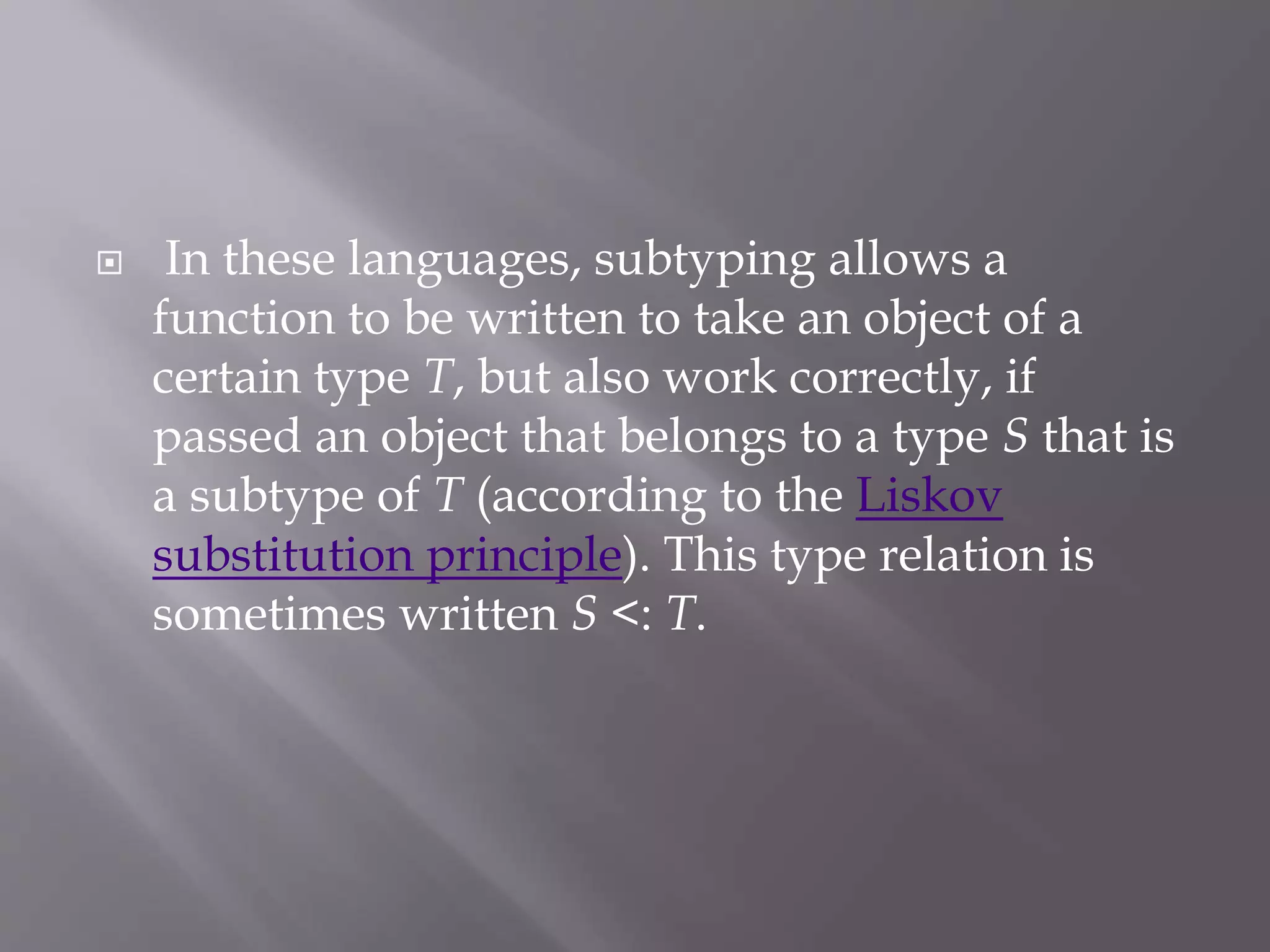
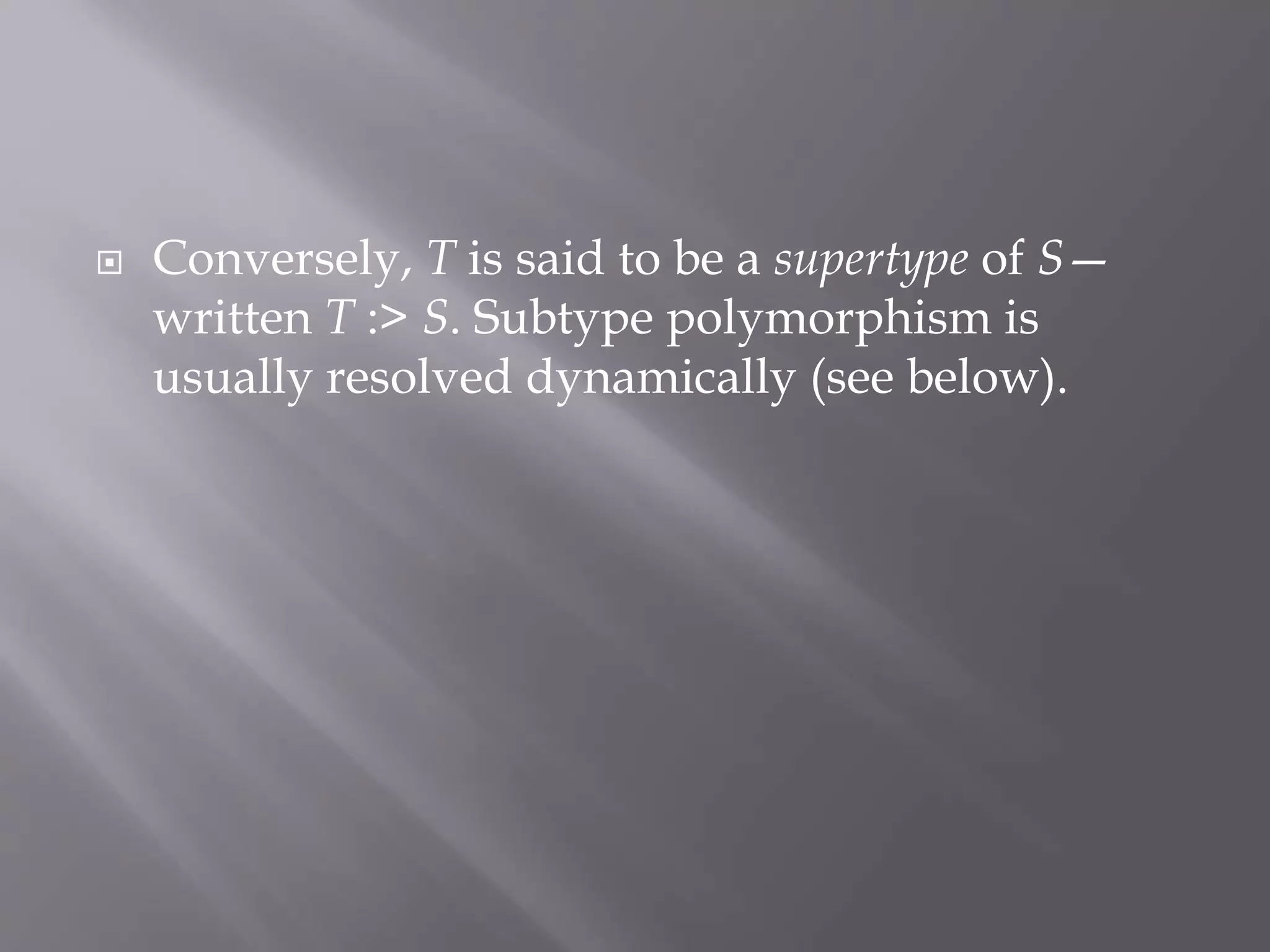
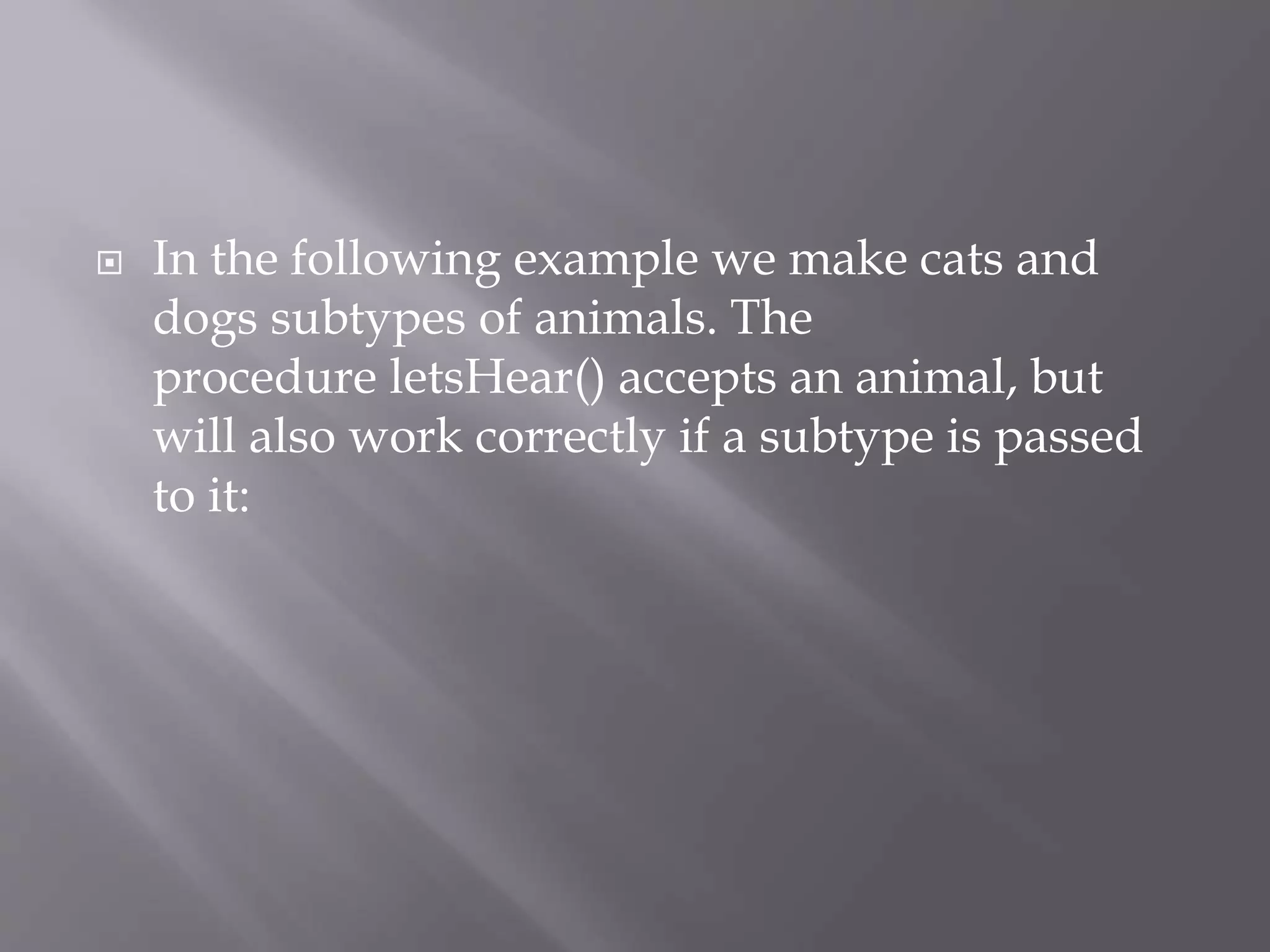

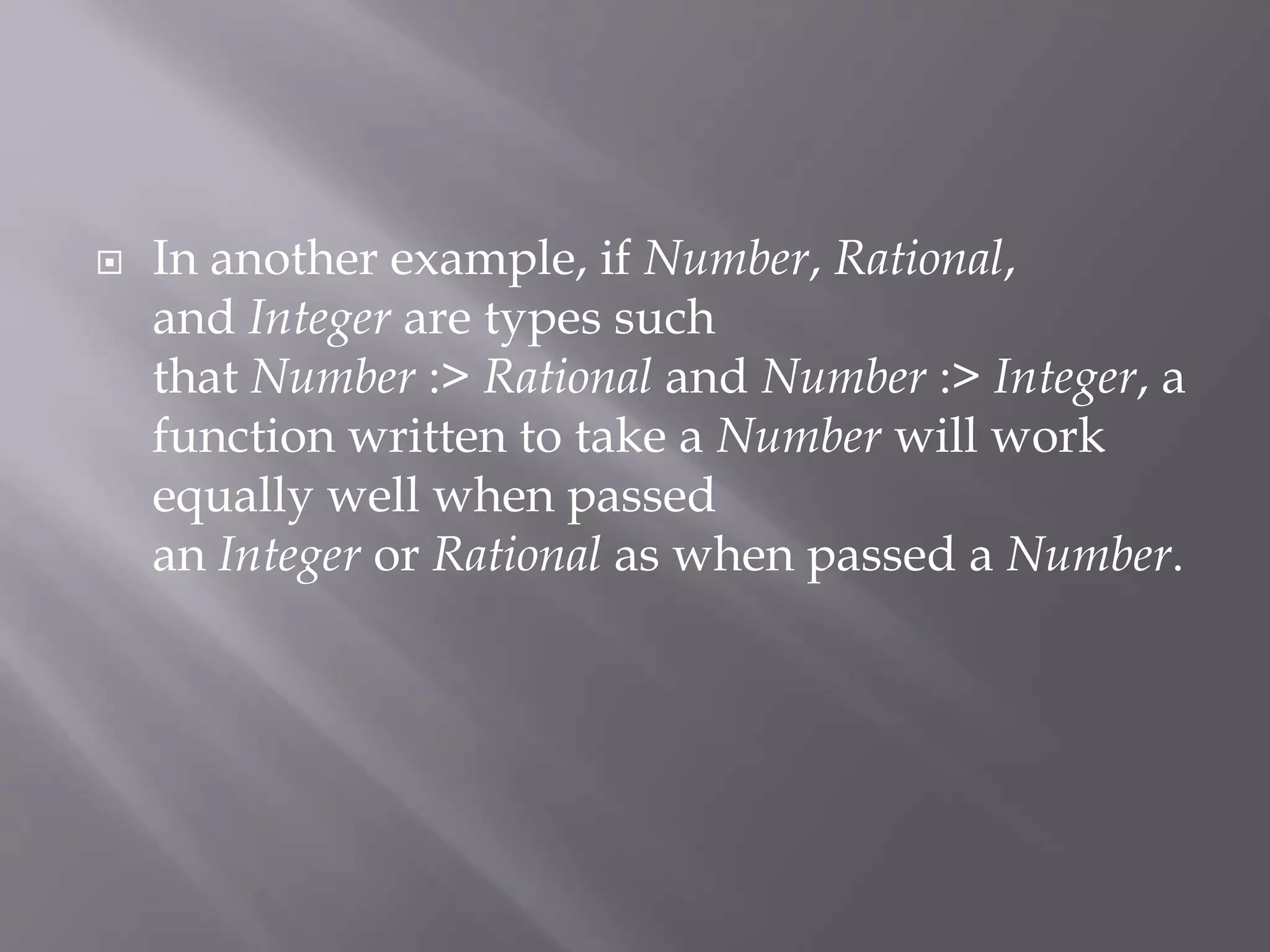
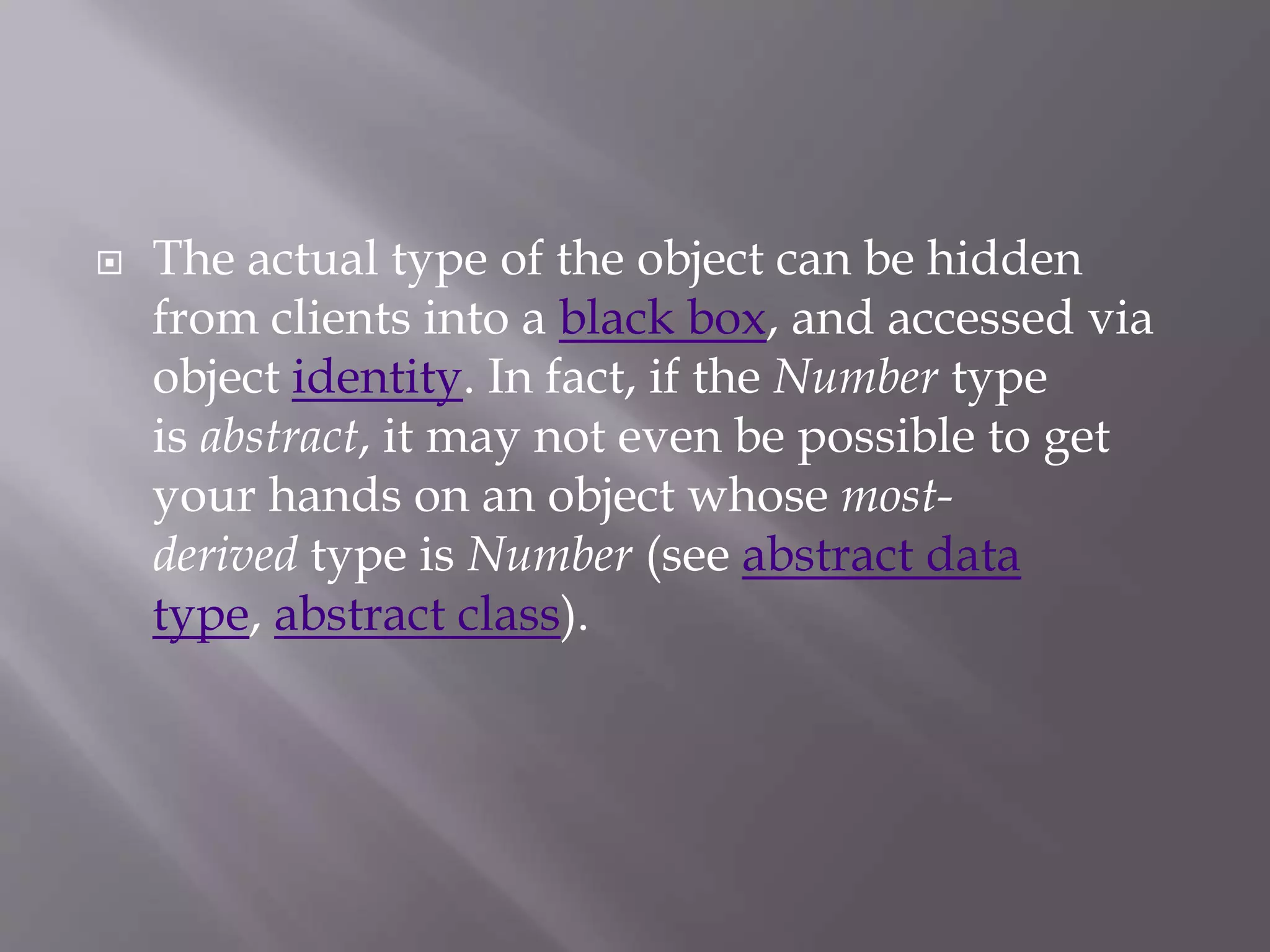
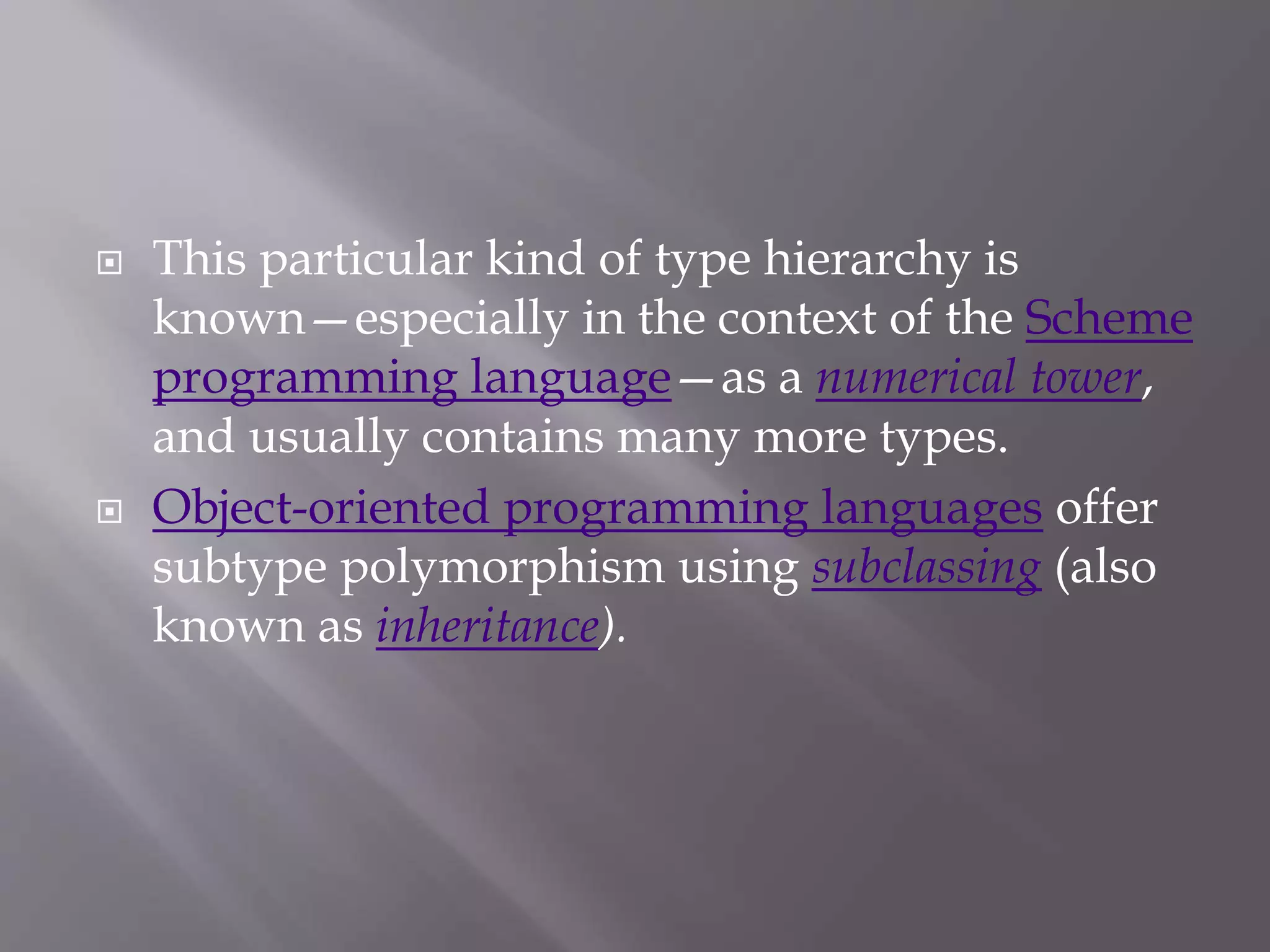
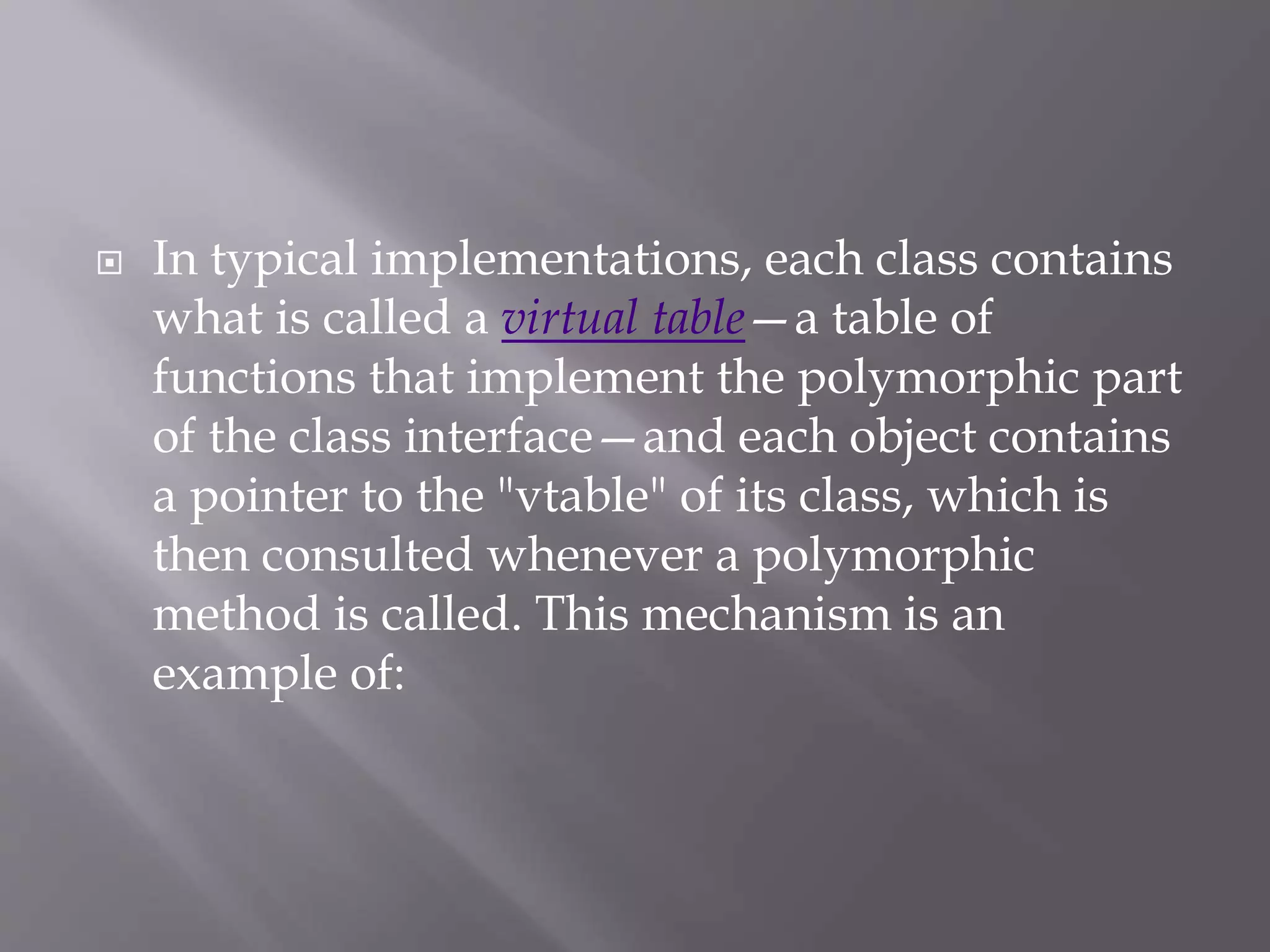
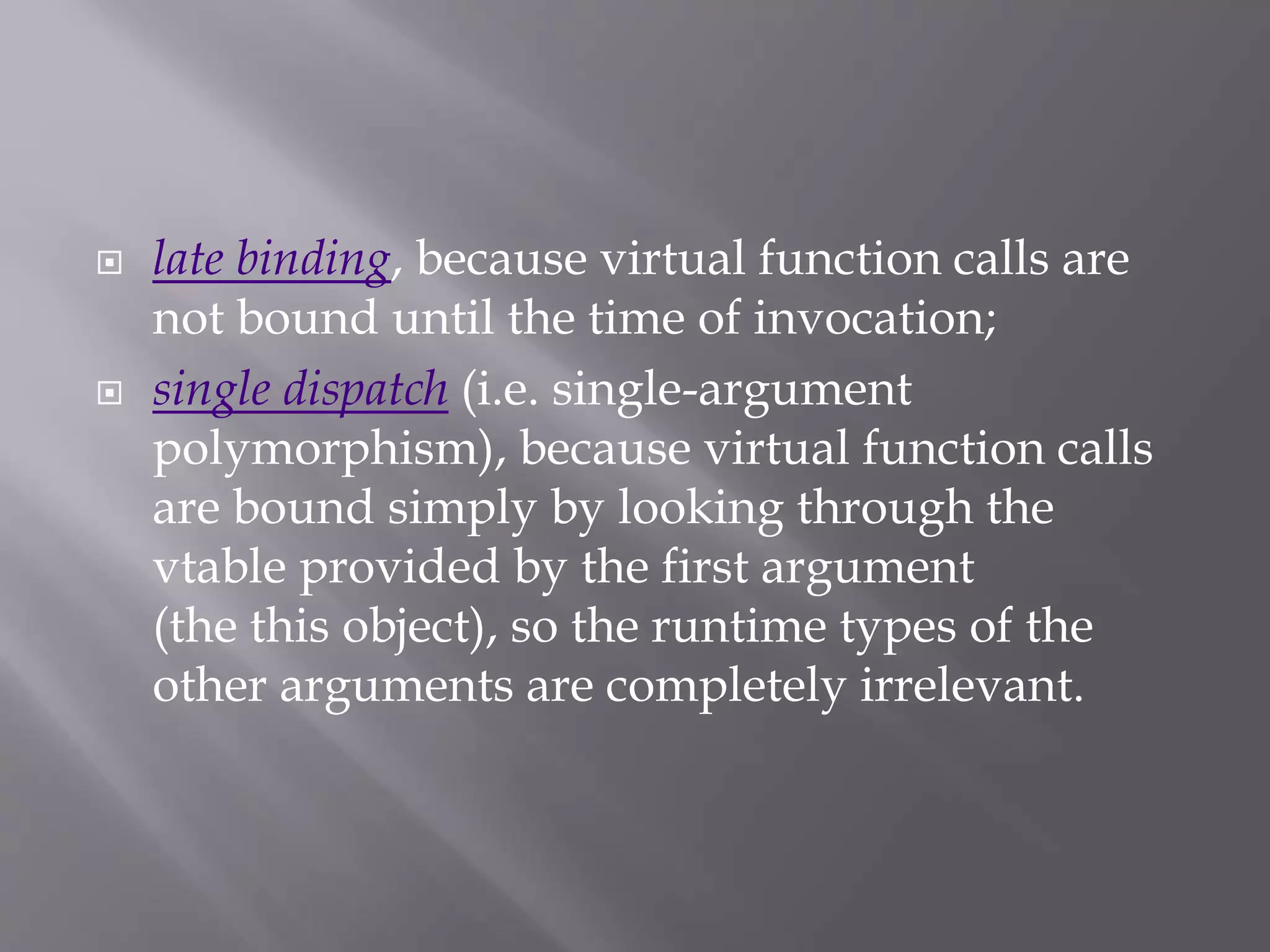
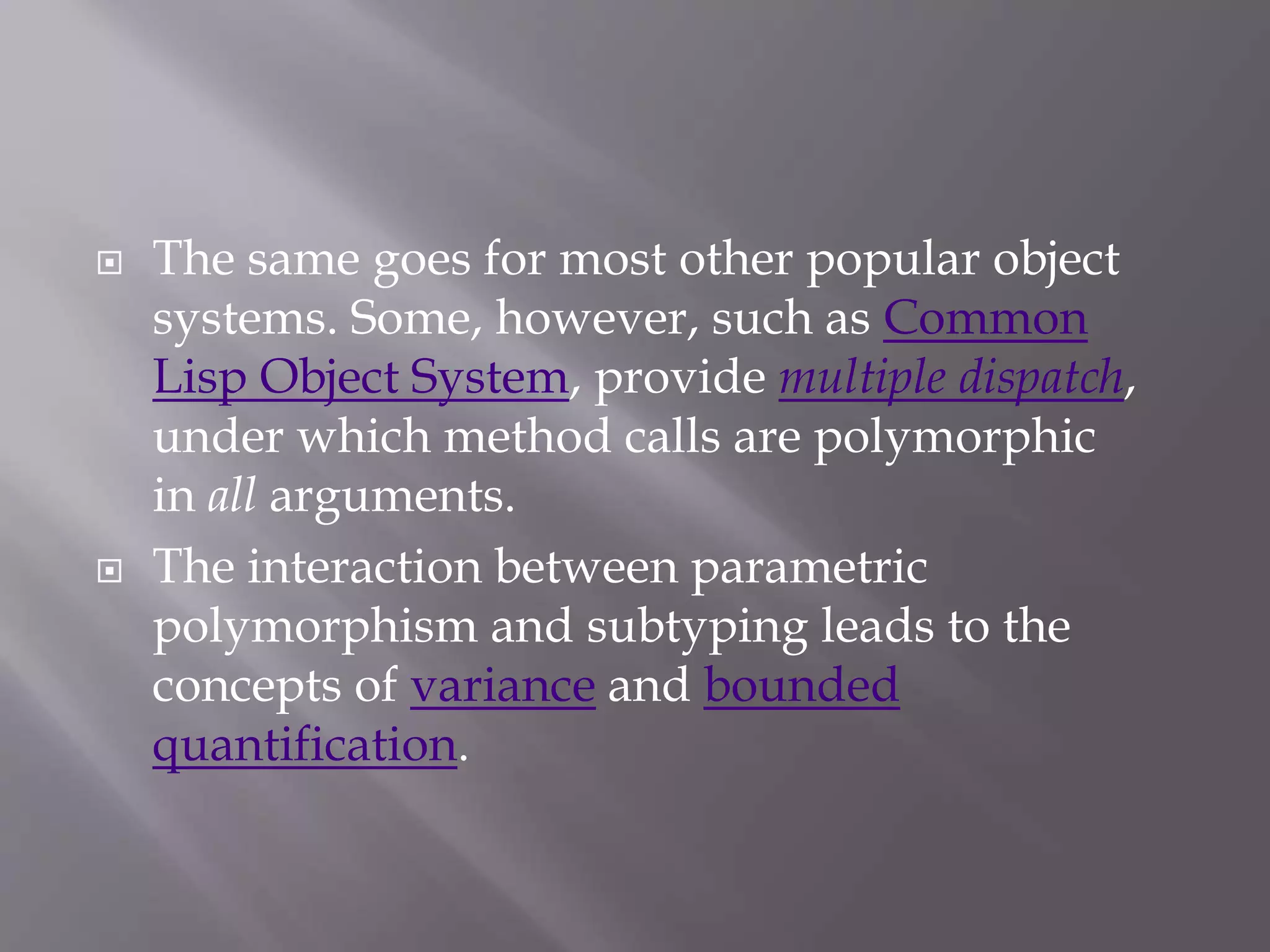
![ Row polymorphism[8] is a similar, but distinct
concept from subtyping. It deals
with structural types. It allows the usage of all
values whose types have certain properties,
without losing the remaining type information.](https://image.slidesharecdn.com/polymorphism-200830090817/75/Polymorphism-30-2048.jpg)
